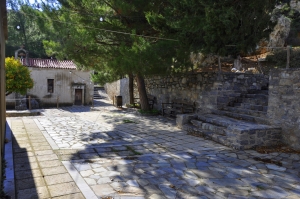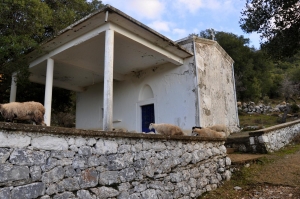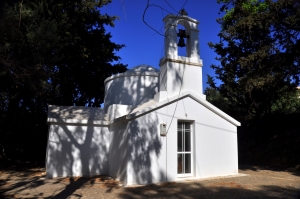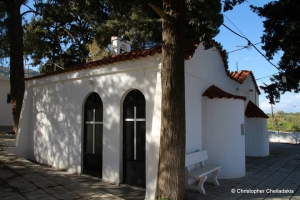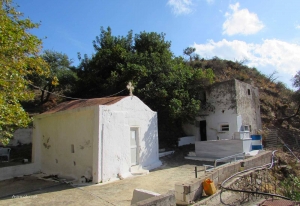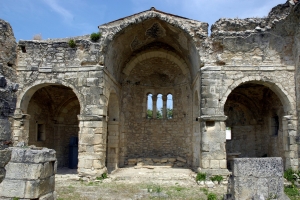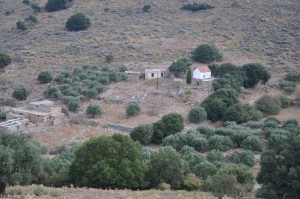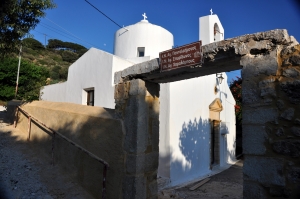The monastery of Panagia Kera Kavallaras operated as a dependency of Dionysiou Monastery at Athos in the 15th century and was dedicated to the Virgin Mary. The temple of the ruined monastery is well maintained, but has undergone many alterations. The location oversees the plains of Malevizi and Heraklion.
After the lifting of the ban on cultivation of the Lassithi Plateau by the Venetians, they left the land to friend-refugees from the Peloponnese. Peloponnese was occupied by the Turks since the 15th century.
The temple of the Panagia at Zachariana is dedicated to Virgin Mary and dates back from the 10th-11th century. It has a very special architecture, with a free cross with a dome. There are some frescoes surviving in poor condition.
By the highway at position Gazi we find the church of Agia Marina, celebrated on July 17. The church of Agia Marina is doubled aisled with the second aisle dedicated to Saint Spiriodon. Saint Spyridon, which was the original church, was built in 1901 by the Andreas Kalokerinos. Kalokerinos after the departure of the Ottomans from Crete acquired a huge fortune in the most fertile part of the whole of Crete, the province Malevizi.
Near Potami dam, province Amari, and south of village Harkia, in a lush green position with plane trees we meet the abandoned convent of Panagia Eleousa, dedicated to Zoodochos Pigi (Life Giving Spring). We can reach this point through a sign on the main road surrounding the dam. The place hosts the small church dating back to the Venetian Era and bearing some traces of frescoes.
The Cathedral of Saint John is located at Episkopi, province Mylopotamos, and is a cruciform temple with a dome. It was built in the 13th century on the ruins of an early Christian basilica of the 5th century. It became the cathedral and the seat of the Diocese of Avlopotamos during the Venetian Era. Inside, on the surving dome we meet some frescoes of the 14th century following the Palaeologean style.
At the abandoned settlement of Frathias, near the monastery of Xera Xyla, there is the church of Saint John, which for once was the temple of a small monastery. The church is single-nave, arched and at the entrance there is the date 1590 indicated.











